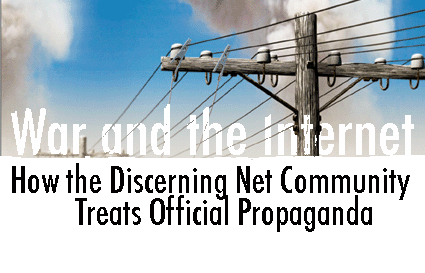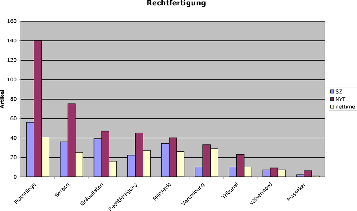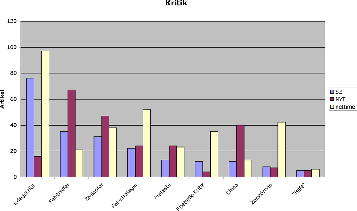War and the Internet:
How the Discerning Online Community Treats Official Propaganda
Multinational Information Operations Experiment (MIOE), Workshop 4
Berlin, 20.02.2004
Point of Departure Only remaining super power after the fall of the Berlin Wall: U.S. Economical and technological superiority. Worldwide: Instable state of affairs, growing terrorism activities. War becomes more acceptable as a means to end conflicts because of technological changes (Revolution in Military Affairs). But: The need for justification of war in democratic civil societies calls for enormous propaganda efforts. Best medium for propaganda: Mass media. New player: The Internet. Credited by media theorists as carrier of hope ("electronic agora", "Gegenöffentlichkeit"). Research questions: => Propaganda (a means of persuasive communication that tries to manipulate certain target groups). Especially in war times the frontier between different forms of public relations blurs: The fog of war. Information warfare (information operations): Doctrine of total information control. The Media and the Military War propaganda has a long tradition: When I scanned the smoky streets through the Bradley's tiny glass vision blocks, searching for "Iraqi dismounts," as the tankers called infantrymen, I wasn't just recording the scene for a story. I was searching for targets. Placed in a soldier's seat, I had been asked by an officer to perform a soldier's job. The world saw vivid pictures of disciplined, well-trained U.S. soldiers in action. [...] It was evident the program was working to our expectations. Media published and broadcast the great work of 3ID (M) soldiers around the world, accurately and unvarnished. Historical points of contact between the technology of the military and the media. But: Big contrasts in their democratic mission (a culture of secrecy vs. a culture of investigation and exposure). The public has a demand for "authentical" information which should be delivered by neutral observers on the spot ("holy grail" of war reporting). => Frank A. Aukofer/William P. Lawrence: "America's Team: The Odd Couple". Mass media tend to be vulnerable to propaganda: Reasons lie in the system of news production: The Internet as an Alternative Medium The Net complies with many of the requirements described as necessary for a kind of more egalitarian communication media: Shelter and center for free speech, myth: Not prone to censorship. Age of the civil press, Independent Media Centers (IMCs). Control revolution and disintermediation. The real change set in motion by the Internet may, in fact, be a control revolution, a vast transformation in who governs information, experience, and resources. Increasingly, it seems that we will ... It is a time of diminishing stature for many authority figures: legislators and other public officials, news professionals, commercial middlemen, educators. Hierarchies are coming undone. Gatekeepers are being bypassed. Power is devolving to "end users." Hybrid medium that merges: The Internet enables "social software": applications that support human interaction beyond one-to-one communication. Examples: Mailing lists and weblogs. Enhancend virtual space for information and communication. Comparison between the mailing list nettime and certain high-ranking weblogs with two superior newspapers: the Süddeutsche
Zeitung ("doubt as its general stylistic device") and the New York Times ("conscience of the nation"). Weblogs or the simplification of publishing: Warblogs: Some blogs develop a more political stance after 9/11 and get very popular. Guys from the Right as the Instapundit or Andrew
Sullivan occupy the domain first (tradition of talk radio). Leftists like Sean-Paul Kelley with The Agonist or Markos Moulitsas Zúniga with DailyKos start blogging in the middle of 2002. Meta blog "Warblogs.cc" as a news portal for opponents of war. Eventually, warblogs have risen to the center of attention with the war on Iraq. The whole phenomenon got famous mainly with Salam
Pax, the Baghdad Net annalist. Also well known were reporters notebooks as the one by CNN correspondent Kevin Sites or G.I.'s weblogs (Sgt. Stryker, Chief
Wiggle, or Lt. Smash-us.com who reported live from the sandbox and eventually turned into "Citizen
Smash"). Study method: Integration of Timeframe: Height of the war in Kosovo (March -- June 1999) Selection of about 90 text categories (action, ground war, Kosovo, debate, collateral damage, etc.), aggregation of eight discourse types: 1. Justification and moralizition The Times leads the discourse of justification: People on nettime also lead in the realm of the reflective media discourse. They almost never open the floor to NATO officials. The New
York Times scores with its high variety in the diplomatic discourse and quotes the highest amount of different actors. On the other hand, it sometimes looks like the official organ of the Pentagon. Most balanced in all the types of discourse is the Süddeutsche Zeitung. It only takes the lead in the discourse of undecidedness. Findings of the Analysis of Single Texts Süddeutsche
Zeitung New
York Times Nettime Kosovo Conclusions Nettime constituted an important supplement to the war discourses in the New York Times and in the Süddeutsche Zeitung during the war in Kosovo. It showed stable rudiments of an open media space, in which its users negotiated on multiple readings. The method of collective text filtering accounted for an wide view of different discourse types. The news rooms of the daily papers can draw from a big pool of senior journalists who can make use of their good relationships in the political and military realm. They can write up enlightening analyses and put events in a broader context. The big papers also attract well-known writers for exclusive features. But the closeness to their sources can also become precarious: It leads to the frivolous acceptance of NATO speaks and the absorption of the discourse of justification. Often anonymous "officials" are quoted. Only sometimes you can see investigative ambition at work. In other times, even crude false reports from NATO are taken over. There were days when the Red Crescent was begging for volunteers to help in taking the bodies of dead people off the city street and bury them properly. The hospital grounds have been turned to burial grounds when the electricity went out and there was no way the bodies can be kept until someone comes and identifies. In the western blogosphere, there is a fight about the interpretation of news from the front-line and from the capitals between right- and left-leaning bloggers. Conservative authors launch campaigns against the liberal media like the New York Times or the BBC. Leftist bloggers draw the attention of their readers towards propaganda lies and disinformation spread by officials and by the synchronized media corps. They put an eye on the financial and social costs of the war and point out indications for sand in the transmission of the U.S. military machine. President Bush is right in the center of criticism. Christopher Allbritton leads a specials stroke with his logbook Back
to Iraq. He first raises about $13,000 via his weblog, then takes off to Northern Iraq and becomes the first official weblog correspondent. He reports with the good feeling of being only accountable to his readers and starts off a debate on "micro journalism". Iraq Conclusions All in all, the warbloggers constitute the exact counterparts to the embedded
correspondents. They only submit to the propaganda bias in their own head and deliver a totally different picture from the other side of the (media) front. Blogging sketches a world of individuals, of life and death and suffering and desire, just as embedded reporting depicts a world of military objectives and campaigns, victory and defeat. If the two could somehow carry equal weight, perhaps their opposite biases might cancel each other out, or at the very least provide for a greater balance in news coverage. The blogosphere emerges as a kind of "reality Web" with a growing readership. It can be considered the equivalent of reality TV -- just without its disfiguring factors like the fundamental staging of everything shown and overblown show effects. While reality TV simulates reality only and tries to become even more real than reality, reality Web lives from voices that deliver a personal point of view. It describes the ugly sides of events, too, the dead of war, the intrusion of emerging conflicts in daily life and therefore in a setting which is easy comprehensible to readers. But as it is now, embedded reporting and reality TV is plainly the order of the day. Summary Weblogs and mailing lists have become a fixed part of the daily media "consum" of information-hungry surfers. The spectrum of voices and acteurs who sometimes deliver firsthand accounts or function as a personal news filter has increased significantly. People who dive into this infosphere will have a hard time believing in official propaganda. They get somewhat immune to the blunder and blabla from politicians and military leader -- as well as to the many conspiracy theories spread over the Net. On the other hand, there is no manifest or compact public of dissent to be recognized online with a few mouse clicks. We are still talking about a well-educated and media literate elite here, but it seems to be growing. Constraints:
The Meaning of Mass Media in a Democracy
But: Interaction with (and manipulation by) public relations, think tanks, public affairs, spin doctors.
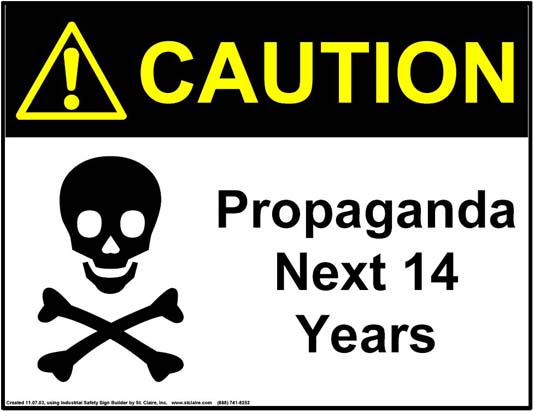
David
Zucchino (Los Angeles Times) 03.05.2003
Analysis of the 3rd U.S. I.D. (Mechanical)
Andrew Shapiro 1999
The Study

Kosovo
2. pro NATO (advantage NATO)
3. pacifist/anti-war
4. pro Serbs (advantage Serbs)
5. tie / undecided
6. player
7. diplomatic / negotiation
8. media self-reflection.
Nettime members criticize the war most frequently:
Iraq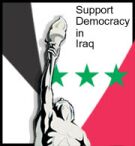 Salam Pax takes on a worm's eye view in his weblog reporting. He totally contrasts the bird's eye view of the cameras in the falling bombs. His blog entries can be seen as an equivalent to the reports of the Serb diary writers.
Salam Pax takes on a worm's eye view in his weblog reporting. He totally contrasts the bird's eye view of the cameras in the falling bombs. His blog entries can be seen as an equivalent to the reports of the Serb diary writers.

Julie Hilden in the online magazine FindLaw
